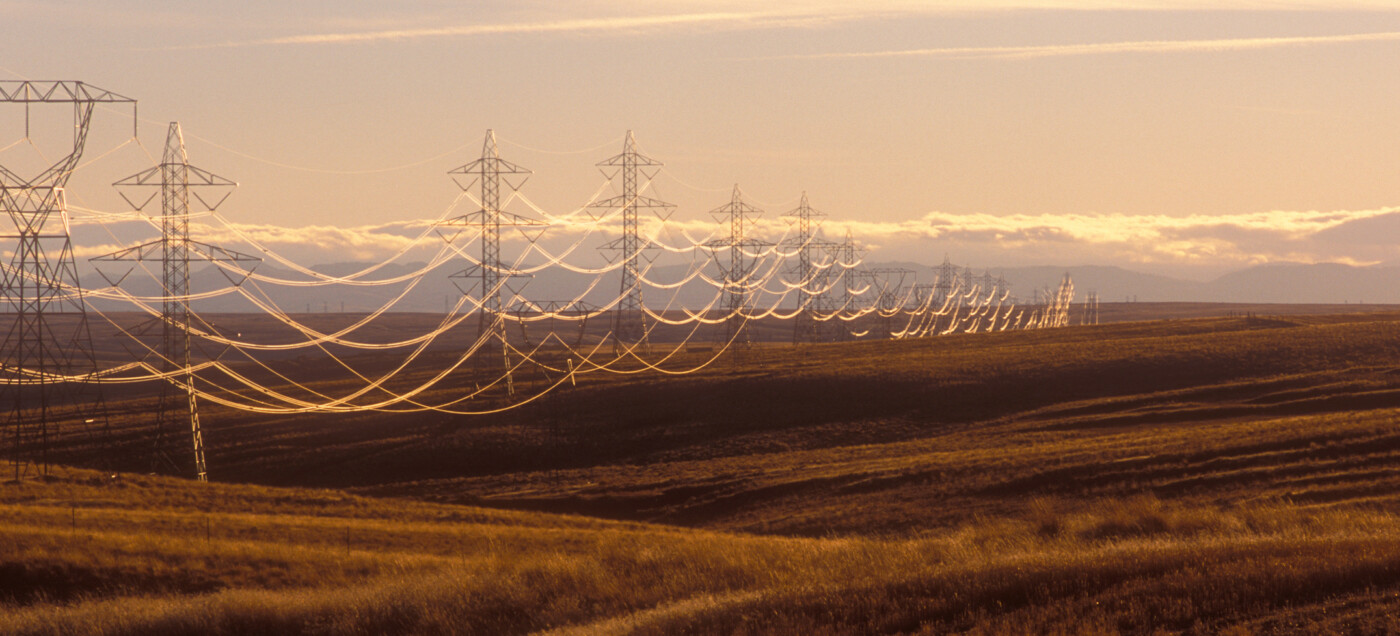In summary
A regional electric grid coordinating diverse power resources with neighboring states and modernized grid planning would help California avoid blackouts.
California has been hit hard by record wildfires and abnormal heat, while a global pandemic silently persists, and for a few hours in August, rolling blackouts.
The blackouts prompted finger-pointing among state agencies, but after initial sensationalist headlines and social media speculation, we’re learning what caused them and how to avoid them in the future.
Despite claims from fossil fuel proponents and misinformed journalists, we can definitively say renewable energy or California’s path to 100% net zero carbon emissions did not cause the blackouts. California’s three energy agencies confirmed this, saying “renewable energy did not cause the rotating outages … clean energy and reliable energy are not contradictory.”
Commentators politicizing the blackouts have used them to justify their fossil fuel love affair and rail against clean energy, but missed the bigger picture. Fossil fuels only accelerate the cycle of more heat, more fires, more strain on the grid, and more expensive climate damage mitigation measures. We cannot afford not to move full speed ahead with the clean energy transition.
Blackouts like these are an avoidable problem and a failure of grid planning, not renewable energy. It’s no surprise the sun sets every day – just like we plan for predictable changes in demand, engineers plan for renewables to maintain reliable grid operations. A lack of electricity supply at the hottest moments of the heat wave was the primary culprit.
Three large natural gas plants were unexpectedly offline at critical times, and an executive at the state’s grid operator said if they were online, it would not have initiated rotating blackouts.
Natural gas facilities have trouble performing in high heat, and California is baking in another record-setting summer, the kind climate change makes five times more likely. With neighboring states suffering the same regional heat wave, California was less able to lean on electricity imports, which would otherwise have been a backstop.
California’s grid operator also said a large wind farm’s output unexpectedly decreased, but wind fluctuations are generally accounted for in normal grid operations. Combined with natural gas being offline and fewer imports, demand exceeded supply. Solar energy never failed the grid operator – all the solar California has added makes the grid less likely to fail during the hottest days.
California has an overly complex, multi-layered set of institutions overseeing the electricity system, partially a hangover from the 2001 energy crisis. The California Energy Commission forecasts demand, the California Public Utilities Commission plans to meet demand while directing what utilities buy, and the California Independent System Operator runs the grid. These agencies pointed fingers at one another after the blackouts, but have since begun working together on solutions. That’s a little late.
Tradeoffs exist between reliability and cost; the customers bearing the risk of outages are the ones paying for backup power, the PUC makes choices about this trade-off on behalf of customers. For years clean energy developers, utilities and the grid operator have pushed for more clean energy investment; unfortunately the CPUC has been slow to act.
Without minimizing the suffering during the blackouts, it’s worth considering the context. California has not seen rolling blackouts since 2001, and federal standards suggest supply shortages once every 10 years constitute competent management. The length of outages and the number of affected customers pale compared to PG&E’s 2019 wildfire-related power shutoffs or everyday blackouts caused by events like trees falling on wires.
Despite their infrequency, rolling blackouts are a harbinger of what’s coming as climate change impacts and weather extremes become the new normal, unless grid planners account for climate risks. Looking backward for future planning is no longer viable – improving grid reliability is crucial for people, economy and climate.
These rolling blackouts validate California’s primary policy priorities: building renewables, rapidly adding batteries, reducing customer demand without sacrificing service when supplies are limited, improving energy efficiency and supporting solar-plus-storage installations.
Let’s add two more imperatives: A regional grid coordinating diverse power resources with neighboring states – like Washington’s hydropower and Wyoming’s wind – and modernized grid planning so state agencies are aligned and equipped to operate a changing system.
Today, California has limited electricity trading options, but creating a regional integrated power market could lower costs and increase reliability – indicated by $1 billion saved across the limited Western Energy Imbalance Market. Two-thirds of all electricity sold in the U.S. benefits from these regional markets, and it’s time the West did too.
There’s no silver bullet to keep the lights on in a climate-changed future, but California’s grid planners should convene experts to fundamentally rethink how we plan for a more flexible grid – and the PUC has started this process.
California has led America’s clean energy transition, and the world is watching how we tackle the thorniest climate policy challenges. Let’s use this moment to refresh our plan to build the clean energy grid we need – creating good jobs and cleaner air while addressing climate change.

Sonia Aggarwal is vice president of Energy Innovation, a nonpartisan energy and climate policy think-tank based in San Francisco, policy@energyinnovation.org.

Ms Aggarwal makes a compelling argument that California should accelerate its investment in its electrical grid. Be it through green sources or traditional ones, the state needs a more reliable backbone for future growth. However, as we watch the news for the next rolling black out, it is clear that the grid is not something we should further burden. Piedmont’s REACH code ideas, should they pass vote muster, would do exactly that.
While I disagree with the author’s solution, her description of California’s frail grid is exactly why the Piedmont Reach codes need to be tabled. Don’t make Piedmont even more vulnerable to what lies ahead than it already is.